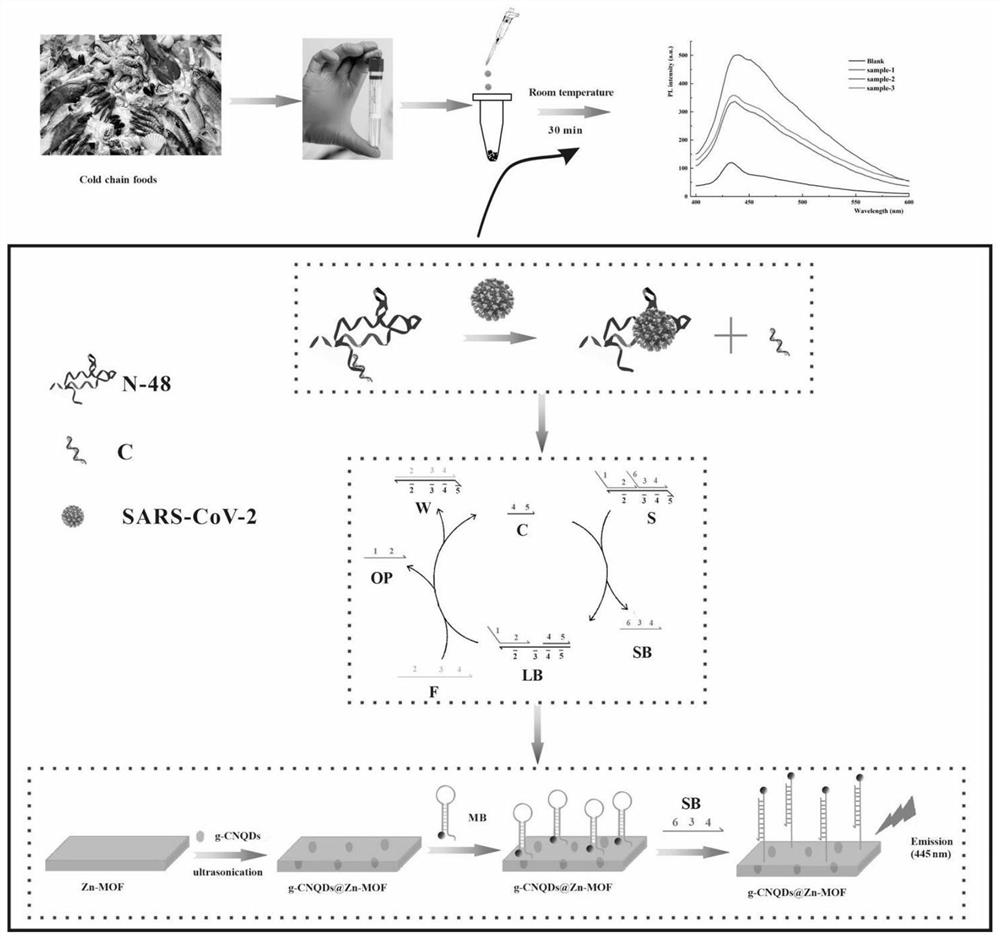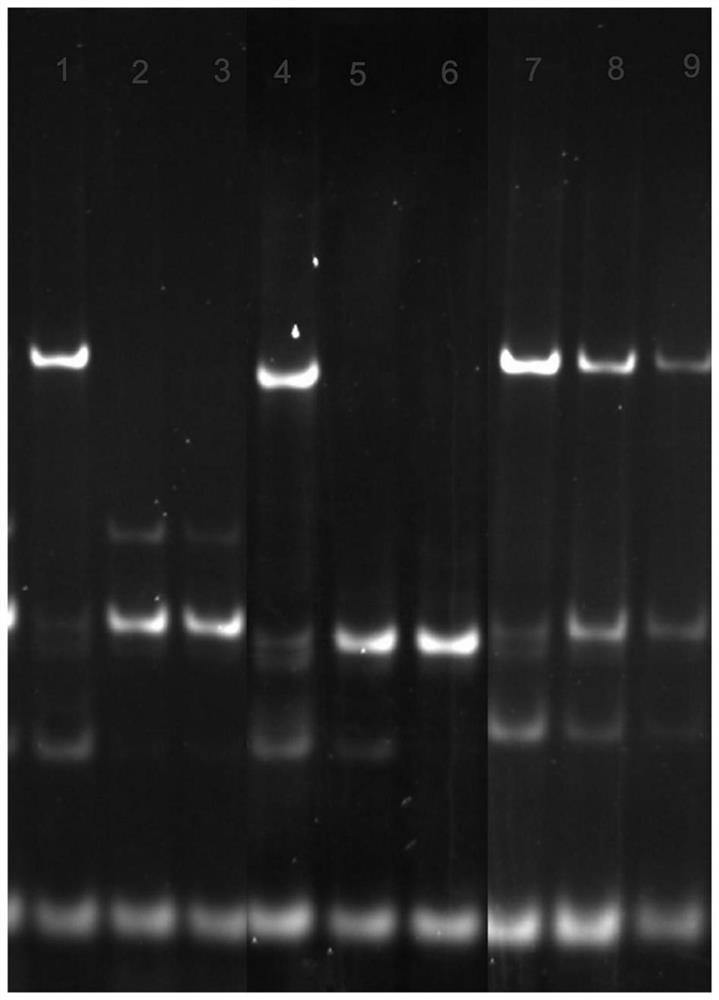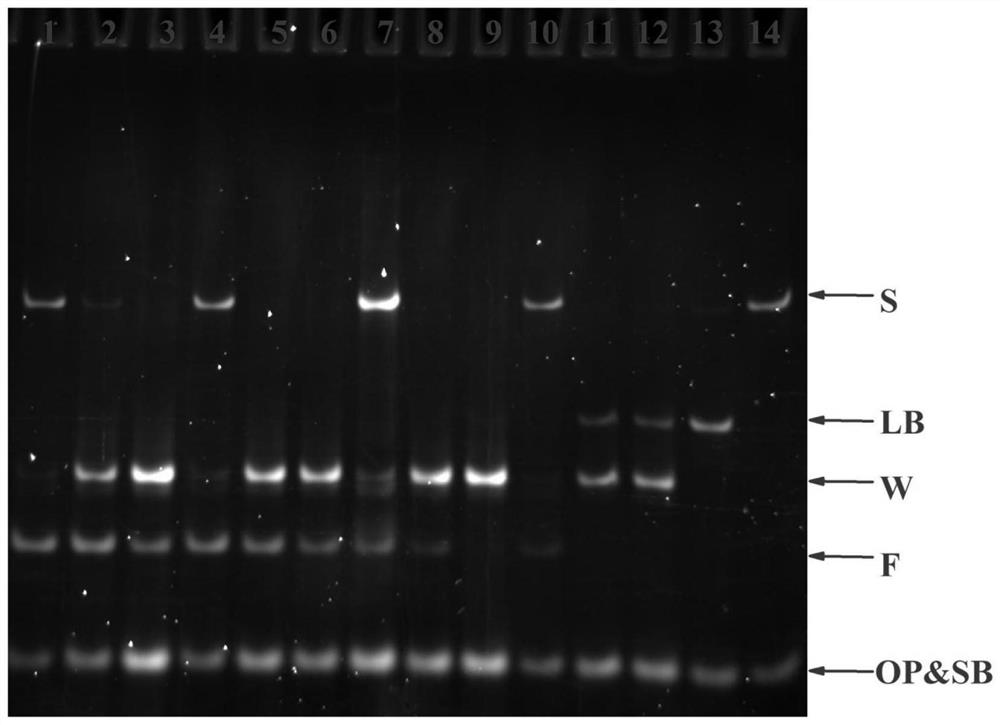Construction method of fluorescent aptamer sensor and application of fluorescent aptamer sensor in novel coronavirus detection
An aptamer sensor and construction method technology, applied in the field of biomedicine, can solve the problems of limited use range, high cost, difficult modification, etc., and achieve the effects of improving detection sensitivity, simple and fast operation, stability and repeatability
- Summary
- Abstract
- Description
- Claims
- Application Information
AI Technical Summary
Problems solved by technology
Method used
Image
Examples
Embodiment 1
[0065] In the enzyme-free catalytic system based on the conformational entropy change to drive the forward reaction, figure 1 toehold shown in with The length will affect the initiation of the strand displacement reaction.
[0066] This embodiment uses three areas with The number of bases combined with different S1 strands, the difference between the three is:
[0067] In the first S1 chain: 6nt / 4nt.
[0068] In the second S1 strand: 5nt / 5nt.
[0069] In the third S1 strand: 4nt / 6nt.
[0070] The three S1 strands were pre-reacted with the OP strand and the SB strand in a 1:1:1 mixed system at 35-45°C for 30-45 min to form three sets of different substrate probes (S) with a stable triple-strand structure. The sets are substrate probes S①, S②, and S③ respectively. The selection of embodiment 2 triple-strand composite substrate probes
Embodiment 2 3
[0070] The three S1 strands were pre-reacted with the OP strand and the SB strand in a 1:1:1 mixed system at 35-45°C for 30-45 min to form three sets of different substrate probes (S) with a stable triple-strand structure. The sets are substrate probes S①, S②, and S③ respectively. The selection of embodiment 2 triple-strand composite substrate probes
[0071] Three sets of substrate probes (200nmol / L) prepared in Example 1 were reacted with C chain (200nmol / L) and F chain (200nmol / L) respectively to generate W chain, and the blank control group test was carried out simultaneously.
[0072] The generated W chain electrophoresis, the result is as follows figure 2 , figure 2 It is the product electrophoresis of the reaction system of different S probes, in which channels 1-3: S①, channels 4-6: S②, channels 7-9: S③, and channels 1, 4, and 7 are blank control groups.
[0073] The results showed that when the triple-stranded complex substrate probe toehold and domain When t...
Embodiment 3
[0075] The selection of embodiment 3F chain concentration
[0076] The F chain acts as a dye chain to provide reaction power, and its suitable concentration will affect the specificity and reaction efficiency of the chain displacement reaction driven by conformational entropy.
[0077] Get the three-chain composite substrate probe S of embodiment 2 (200nmol / L), C chain (200nmol / L) and the F chain of different concentrations, the concentration of F chain (100nmol / L, 200nmol / L, 300nmol / L, 400nmol / L).
[0078] S② (200nmol / L), C chain (200nmol / L) and the different concentrations of F chain were reacted to generate W chain, and the blank control test was carried out at the same time.
[0079] The generated W chain electrophoresis, the result is as follows image 3 , image 3 Electropherograms of products in reaction systems with different concentrations of F chain. Among them, channels 1~3: the concentration of F chain is 400nmol / L, channels 4~6: the concentration of F chain is...
PUM
| Property | Measurement | Unit |
|---|---|---|
| diameter | aaaaa | aaaaa |
| width | aaaaa | aaaaa |
Abstract
Description
Claims
Application Information
 Login to View More
Login to View More - R&D
- Intellectual Property
- Life Sciences
- Materials
- Tech Scout
- Unparalleled Data Quality
- Higher Quality Content
- 60% Fewer Hallucinations
Browse by: Latest US Patents, China's latest patents, Technical Efficacy Thesaurus, Application Domain, Technology Topic, Popular Technical Reports.
© 2025 PatSnap. All rights reserved.Legal|Privacy policy|Modern Slavery Act Transparency Statement|Sitemap|About US| Contact US: help@patsnap.com



